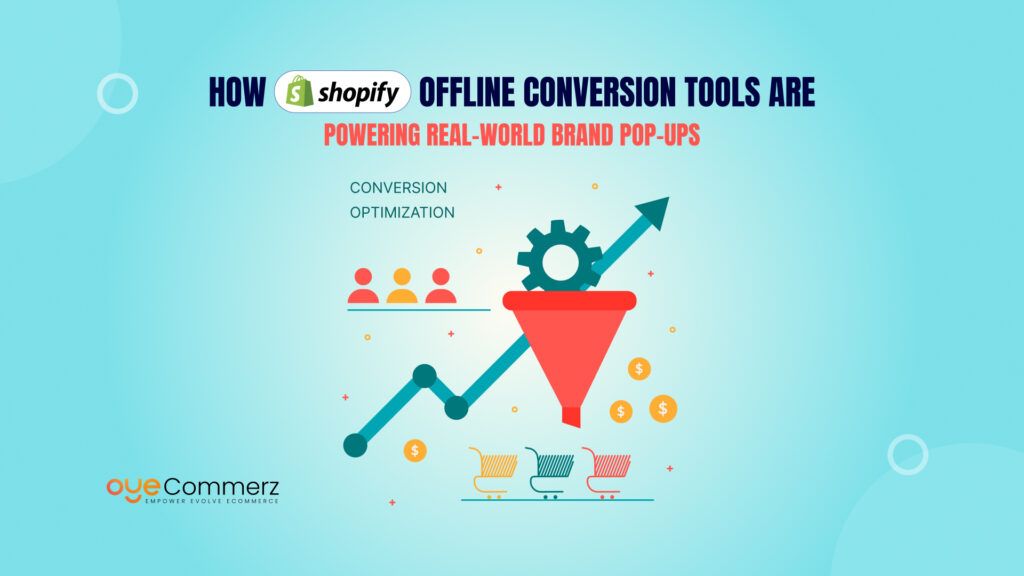According to Statista, e-commerce return deliveries in the U.S. are expected to cost retailers $743 billion by 2025. With over 30% of online orders returned every year, return management has become a critical concern for growing Shopify businesses. High return rates hurt profit margins, slow down operations, and negatively impact customer satisfaction.
Shopify offers built-in services like order tracking, refunds, and customer support tools to help merchants manage returns more efficiently. But as stores scale, many sellers realize the limitations of default features. That’s why more brands are exploring Shopify apps for returns to gain better control, automation, and insights.
This blog explores practical strategies for reducing return rates in 2025, comparing the strengths and weaknesses of Shopify return tools with third-party plugins, so you can reduce losses and increase customer trust.
The Real Cost of High Return Rates in Ecommerce
Returns may seem like a normal part of running an online business, but their hidden cost is anything but routine. For every product that comes back, you’re not just issuing a refund, you’re losing time in manual handling, increasing reverse logistics costs, and risking a negative customer experience.
Worse still, return-heavy operations eat into profit margins and damage long-term trust. In 2025, where competition is fierce and customer loyalty is fragile, this can hurt your business more than it seems on the surface.
Why Are Returns Rising?
Return volumes are increasing year over year, and it’s not just due to defective products. Many returns happen because of poor communication or gaps in the customer journey:
- Incomplete or inaccurate product descriptions
- No clear sizing charts, especially in apparel
- Product images that don’t reflect reality
- Vague return policies or lack of clarity on the return process
These issues cause confusion and disappointment, two major reasons customers initiate returns in the first place.
Without the right tools in place for reducing return rates, ecommerce brands risk losing both revenue and loyal customers.
The Hidden Toll on Your Business
- Operational stress: Returns take up staff time better spent on growth
- Inventory inefficiency: Restocking delays reduce fulfillment speed
- Lower customer lifetime value: Buyers who return frequently rarely return to shop again
A Smarter Way Forward
To get ahead, Shopify merchants need to shift from reactive to proactive return strategies. This begins with clear product data and policy visibility, but doesn’t stop there.
Platforms that simplify return handling, like Shopify’s built-in tools, help businesses take that critical first step. But to truly optimize, advanced return management solutions may be needed, tools that integrate automation, smarter workflows, and exchange options to improve the post-purchase experience.
What Shopify Offers to Manage Returns in 2025
Shopify remains a top platform for ecommerce sellers in 2025, especially for those starting small or scaling steadily. One of its key strengths is offering merchants a built-in system to handle product returns without requiring additional apps. These built-in return features are designed for simplicity, making return management accessible to everyone, even without tech skills. Still, how well these tools meet your business needs depends on the scale and complexity of your return process.
Shopify’s Built-in Return Features
Directly from the Shopify dashboard, store owners can access a complete return workflow. Some of the core functions include:
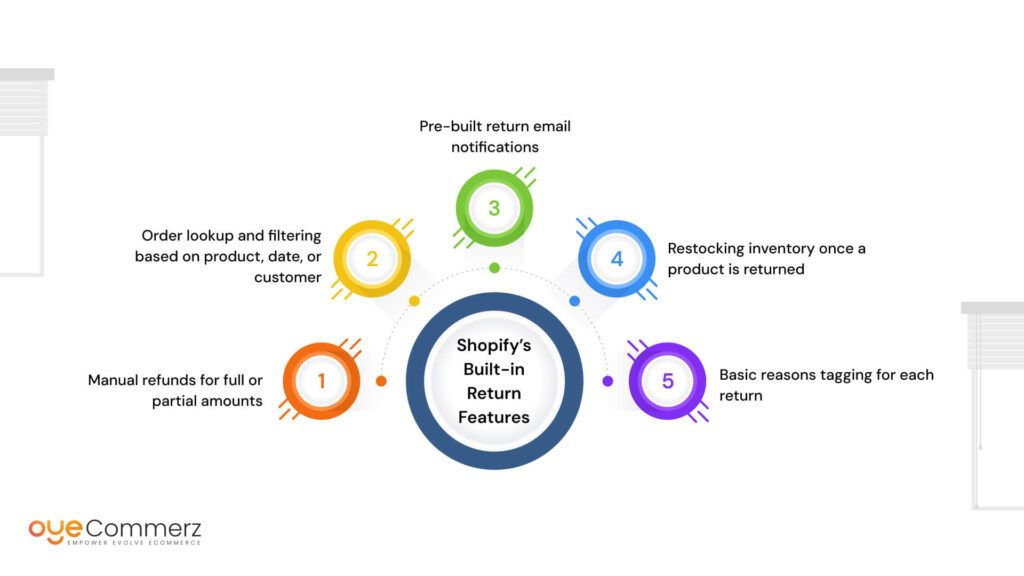
This system is great for small businesses handling a low number of returns. It requires no plugins, works out of the box, and gets the job done for standard return workflows.
Benefits of Shopify’s Built-In Tools
For early-stage ecommerce brands, Shopify’s built-in tools provide clear advantages:
- Easy to use without coding or third-party services
- Saves money by avoiding external software fees
- Enables quick implementation from the admin panel
- Simplifies return communication with pre-set email templates
- Works well for lean teams managing fewer SKUs
This native system suits merchants who want reliability and convenience without technical overhead.
Limitations of Shopify’s Native Features
As your store grows, return processes get more complex. At that point, these built-in tools may fall short in areas like:
- No support for product exchanges, only refunds
- Limited customization of rules for different return scenarios
- No return label creation or live tracking for return shipments
- No built-in analytics to learn from return patterns
- No auto-approval or rejection based on return reason
While helpful for early-stage sellers, this basic setup doesn’t support advanced workflows or automation, making it harder to focus on reducing return rates long-term.
When External Plugins Do a Better Job
While Shopify’s built-in return tools are great for basic needs, they may not be enough for fast-growing brands. As return volumes increase and customer expectations rise, more control and automation become necessary. That’s where external Shopify plugins make a big difference. These advanced tools are designed to improve the return experience for both sellers and customers.
Popular Shopify Return Plugins You Can Use
Some of the most popular apps for Shopify return management are Loop Returns, AfterShip Returns Center, and ReturnGO. These tools go beyond basic refunds and help build a smooth, branded, and flexible return process.
Each app brings something unique to the table:
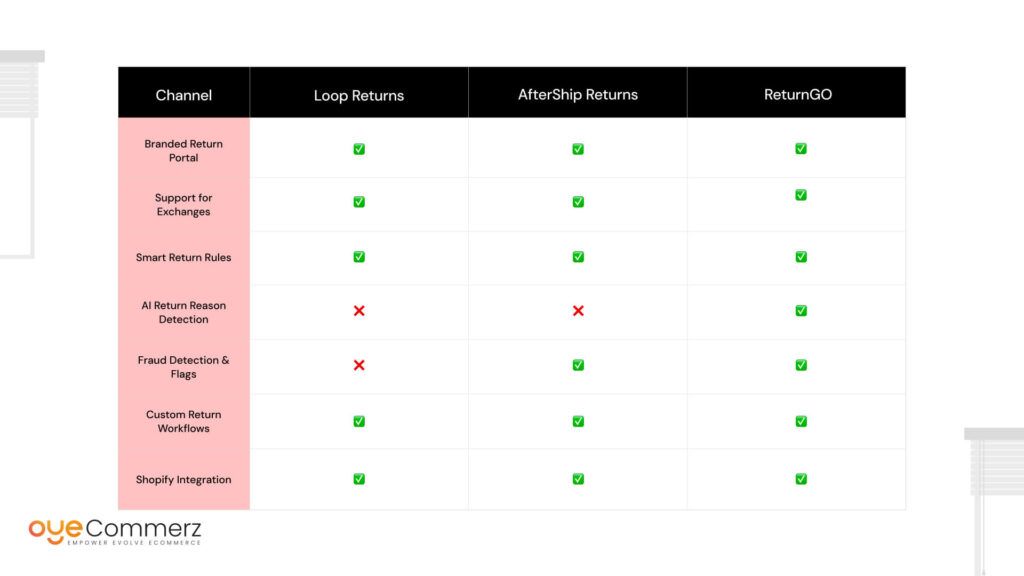
These tools are built to scale with your store, offering flexible features for businesses handling higher return volumes.
Benefits of Using External Return Solutions
External return solutions provide far more than simple refunds. Here’s how they add value:
- Policy control: Create custom return rules by product type, region, or time frame
- Branded return pages: Keep the look and feel consistent with your online store
- Exchange workflows: Let customers choose exchanges first to retain revenue
- AI and analytics: Detect common return reasons and spot trends early
- Fraud filters: Identify risky behavior or repeat returners
- Automation: Save time by setting automatic approvals or rejections
These tools help businesses improve customer satisfaction and reduce manual work. More importantly, they support reducing return rates through smart, automated systems that guide shoppers better.
Smart Ways to Reduce Return Rates in 2025

Reducing return rates in 2025 is more than just offering a return policy, it’s about being proactive, data-driven, and customer-focused. Every return costs money, time, and trust. That’s why top-performing Shopify stores are now using smarter methods to tackle this issue head-on. Let’s explore three effective strategies that help you reduce ecommerce returns without hurting the customer experience.
Use Product Data to Predict and Prevent Returns
One of the smartest ways to cut down returns is by using data. Shopify sellers can now use return plugins that analyze why products are returned, whether it’s sizing issues, misleading images, or unclear details. These insights help you spot patterns and make meaningful changes to your store.
Here’s how to make use of that data:
- Revise product descriptions: Use clear, simple, and accurate language
- Update size charts: Include visual sizing guides and measurements for better fit accuracy
- Improve product images: Use real, unedited photos and videos from multiple angles
- Label frequently returned items: Add alerts or suggest alternatives
By fixing the root causes using real-time feedback, you can reduce the chances of customers making wrong choices, saving both sales and reputation.
Help Shoppers Choose Better With Personalization
Another smart tactic is to guide customers before they even click “Add to Cart.” A personalized experience leads to better choices, fewer surprises, and lower return rates.
Simple ways to personalize and guide buyers include:
- Interactive product quizzes: Help shoppers find what suits them based on needs or preferences
- How-to videos and user guides: Let people know exactly how to use or wear the product
- Verified customer reviews: Show real experiences that boost confidence
- Live chat support or FAQs: Answer questions that usually lead to wrong orders
By making shoppers feel more informed, they’re more likely to buy the right product the first time around.
Automate the Return Process With the Right Tools
Automation doesn’t just make returns easier, it makes them smarter. With the right systems in place, Shopify merchants can approve returns instantly, suggest exchanges instead of refunds, and manage every request with minimal manual work. That’s where Shopify automation for returns comes in.
Key benefits of automating returns:
- Auto-approvals: Speed up the process and reduce customer frustration
- Instant exchanges: Offer quick swaps instead of refunds to keep the sale
- Real-time tracking: Let customers follow their return status from start to finish
- Return reason filters: Use data to segment returns and improve policies
These tools not only make your business more efficient but also provide a seamless post-purchase experience for your customers.
In 2025, reducing return rates is all about being proactive. With smarter tools, detailed product data, and personalized guidance, Shopify brands can protect their profits while building stronger trust with their customers.
How Returns Affect Customer Retention and Loyalty
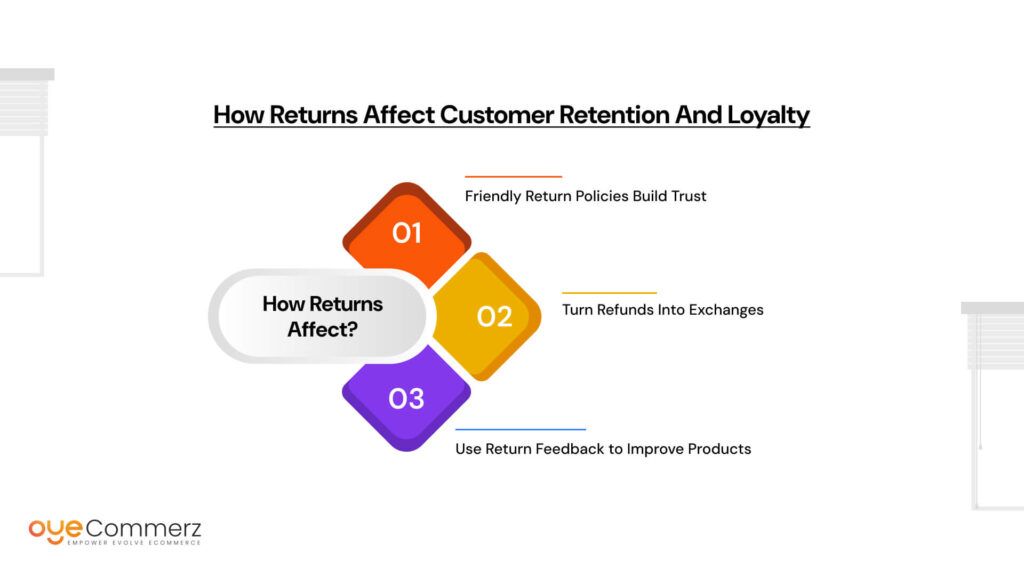
Returns are more than just a logistical process, they’re a critical part of the customer journey. In 2025, smart eCommerce brands understand that how you handle returns can directly impact whether a customer shops with you again or disappears for good. While many merchants focus on reducing return volumes, the bigger opportunity lies in using returns to build customer loyalty and improve brand perception.
Friendly Return Policies Build Trust
Customers today expect return policies that are clear, quick, and customer-first. A return experience that’s confusing or inconvenient often leads to lost trust, and lost business. On the other hand, stores that offer hassle-free returns see higher levels of satisfaction and repeat purchases.
Here’s how return policies influence trust:
- Transparency: Customers want to know the return window, conditions, and process up front.
- Speed matters: Fast refund processing reduces anxiety and builds credibility.
- Cost-free options: Free returns or prepaid labels remove friction and increase likelihood of reordering.
Remember, returns are not failures, they’re a service. And when handled well, they’re a chance to win long-term loyalty. That’s why Shopify merchants should prioritize customer-friendly return setups as a way to improve customer retention and strengthen brand relationships.
Turn Refunds Into Exchanges
Every return doesn’t need to result in lost revenue. When you position exchanges as the preferred option, you not only keep the sale but also help customers discover better-fitting products. This subtle shift in approach can increase satisfaction and lower refund volumes.
Smart ways to convert refunds into exchanges:
- Offer store credit or discounts: Encourage users to choose something else they’ll love.
- Display related products during returns: Suggest items that match their original order.
- Enable instant exchanges: Make the swap process seamless and appealing.
This strategy is a win-win, it reduces your refund losses and leaves the customer with something they actually want, improving their experience without pushing them away.
Use Return Feedback to Improve Products
Each return is a signal. Instead of treating it as just a transaction, analyze why the customer sent the item back. This information is gold for improving your product quality, listing accuracy, and future sales.
Actionable ways to use feedback:
- Tag reasons for return: Set up return portals that require a reason, fit, quality, wrong item, etc.
- Track trends: Identify patterns across products or categories.
- Make updates: Adjust size charts, clarify descriptions, or refine quality control.
Collecting and acting on return data shows customers you care about delivering better experiences, which strengthens loyalty over time.
For Shopify stores using Shopify’s built-in tools, basic tagging and manual tracking are possible, but integrating more advanced feedback systems offers deeper insight.
In short, when handled thoughtfully, returns can become a powerful tool for customer loyalty. By creating a smooth return process, encouraging exchanges, and listening to customer feedback, brands can turn refunds into relationship-building opportunities, not just lost revenue.
Shopify Tools vs. External Plugins: Which One Should You Choose?
When it comes to handling returns in your eCommerce store, choosing the right return solution is key. Shopify offers built-in tools that are simple and effective, especially for newer or smaller stores. However, as your return volume increases or customer expectations grow, external solutions offer deeper control and automation.
Use Shopify Built-in Tools If You…
Shopify’s native return system is a great starting point for merchants who want a quick and simple way to handle returns without additional setup or costs. These tools are part of the Shopify dashboard and include features like refund processing, restocking options, and basic return reasons.
Consider using Shopify return tools if:
- You operate a small to mid-size store with fewer orders
- You have limited returns and prefer manual review
- You don’t need advanced features like exchanges or automation
- You want a solution that’s free and already integrated with your store
These built-in tools are best suited for sellers who are still developing their return processes and want minimal complexity.
Use External Plugins If You…
As your business scales, so does the complexity of your return needs. That’s where external Shopify plugins come in. Tools like Loop Returns, AfterShip Returns Center, and ReturnGO offer robust features such as branded portals, smart return rules, and automated workflows that go far beyond what Shopify’s native tools provide.
Opt for external plugins if:
- You receive high return volumes weekly
- You need automated return workflows to save time
- You want to handle exchanges, offer store credit, or apply return rules by product
- You value customization, branding, and real-time analytics
These tools are ideal for mid to large-size Shopify stores that prioritize customer satisfaction, operational efficiency, and brand control.
Comparison Table: Built-In Tools vs. External Plugins
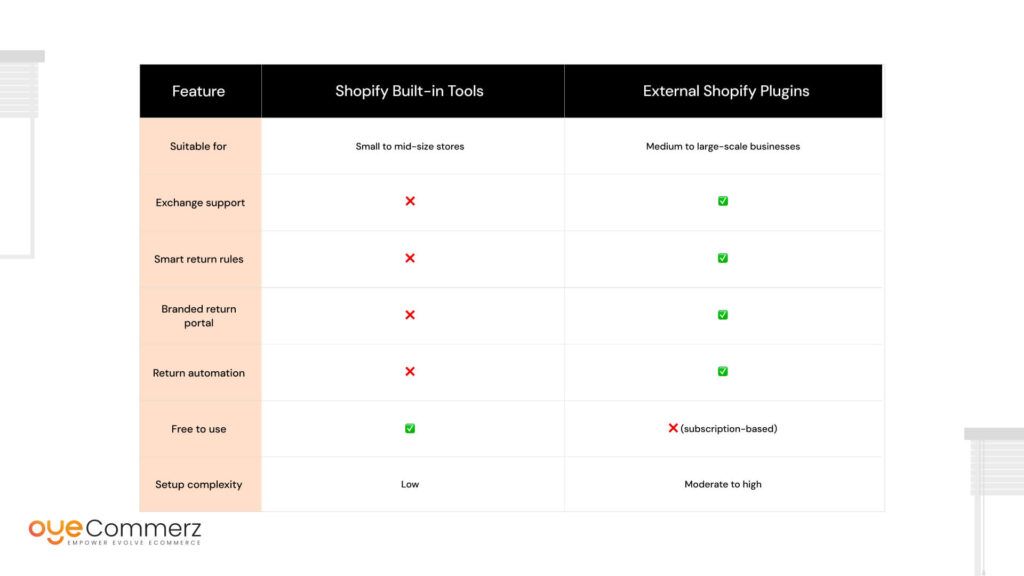
Choosing the right tool depends on your return volume, business size, and the level of customer experience you want to deliver.
Steps to Start Reducing Return Rates Today

Returns can quietly hurt your bottom line, but with the right steps, you can start reducing them right now. Here’s a simple plan to help your Shopify store minimize returns and improve customer satisfaction, without overwhelming your team.
Step 1- Review Your Return Data
Understanding why customers send items back is the first step in solving the issue.
- Look at the return reasons listed in your dashboard or reports. Are customers returning due to size issues, damaged goods, or unmet expectations?
- Spot patterns across products. Maybe a certain item has a higher return rate due to unclear descriptions or inaccurate sizing.
- Talk to your support team. They often hear feedback that never gets logged in return forms.
By identifying what’s causing returns, you can take targeted action rather than making broad guesses. This helps in reducing return rates effectively over time.
Step 2- Choose the Right Tools for Your Store
Now that you’ve gathered insights, it’s time to act. But not all stores need the same level of return support.
- If you’re a small store with few returns, Shopify’s built-in tools might be enough. They’re simple, free, and quick to use.
- If your store is growing or has complex return needs, consider trying Shopify plugins. These external apps offer advanced features like smart return rules, branded portals, and automation for exchanges.
Tip: Most top-rated return plugins offer free trials, use them to test before you commit. Make sure the tool fits your workflow, customer needs, and tech skills.
Step 3- Track Your Progress
Improving returns isn’t a one-time fix, it’s an ongoing process. You’ll need to track performance to know what’s working.
- Use metrics like return percentage by product, average refund time, and exchange vs refund ratios.
- Monitor customer satisfaction after returns. Are they leaving positive feedback, or are they not coming back at all?
- Regularly review your return policy, item descriptions, and shipping practices to ensure they align with customer expectations.
The more you measure, the more confidently you can reduce returns and enhance your brand experience.
By taking these three simple steps, you not only reduce losses from returns but also build a stronger relationship with your customers.
Ready to Take Control of Your Returns?
Let OyeCommerz help you streamline your return process and boost customer loyalty. From smart automation to powerful Shopify services, we’ve got the tools and expertise to grow your store with confidence.
Start reducing return rates today, partner with OyeCommerz and upgrade your return game!
Contact to Migrate your Site to Shopify Now
Conclusion
High return rates aren’t just a cost of doing business, they’re a signal to optimize. With the right mix of strategy and tools, reducing return rates in 2025 becomes achievable and profitable. Shopify return tools offer a solid start, especially for small to midsize stores. But as your brand grows, investing in external plugins unlocks greater control, automation, and customer satisfaction.
By focusing on return rate optimization, using data-driven decisions, and integrating smart automation, your business can turn returns into opportunities. Whether you choose built-in features or advanced Shopify services, a streamlined return process builds trust and encourages long-term loyalty.
Frequently Asked Questions
Improve product descriptions, sizing guides, and images. Use return data to fix common issues and offer better customer support.
Use personalized tools like quizzes or recommendations, set clear return policies, and automate return handling for smoother experiences.
Ensure accurate product listings, provide usage videos, and collect feedback to continuously optimize your offerings.
Shopify’s built-in return tools let you manage refunds, send return emails, and restock inventory directly from your dashboard.
A healthy returning customer rate is around 20–30%, depending on the industry and product type.



